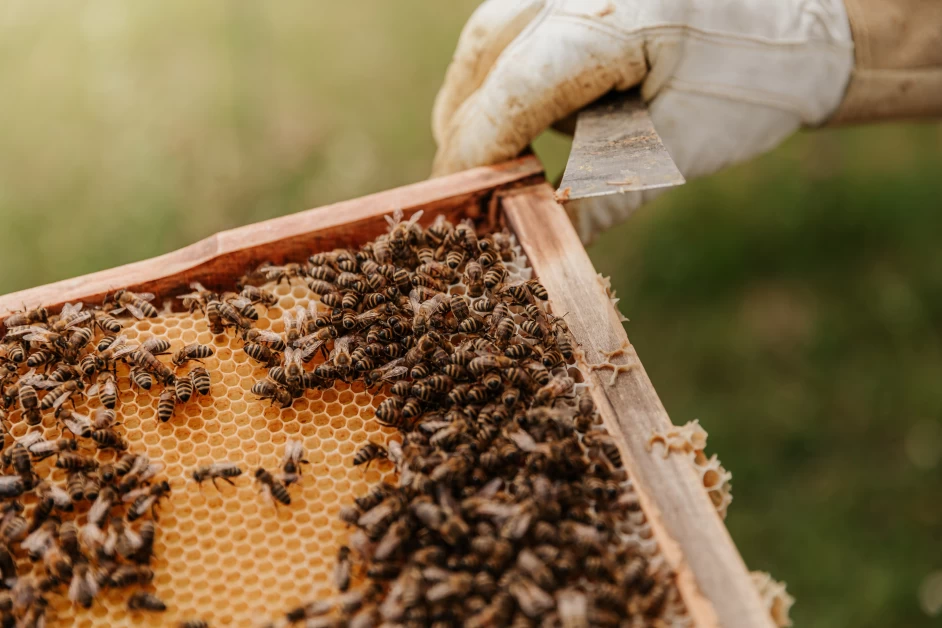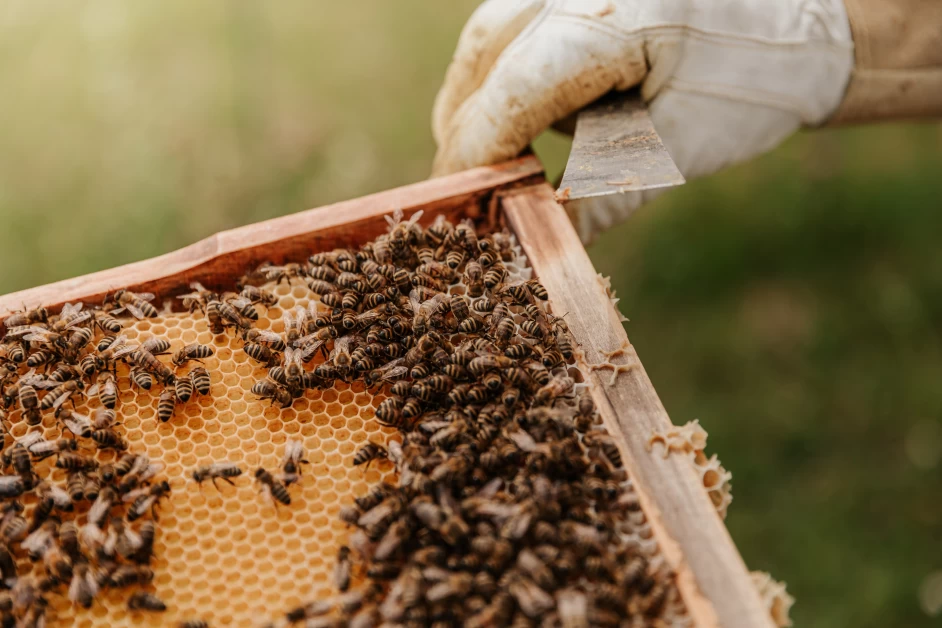Table of Contents
Honey has been a part of human nutrition for millions of years, providing a rich source of accessible energy. It is widely used in baking and tea, adding a delightful flavor to various recipes. But have you ever wondered how bees make this incredible substance? In this article, we will explore the process of honey production by bees, the reasons behind it, and how we can support bees through appreciation and conservation.
The Life of a Bee Colony
A bee colony has a unique hierarchical structure that enables the hive to thrive. Let’s take a look at some key players in this structure:
The Queen
The Queen bee is the mother of the colony and her main responsibility is laying eggs to produce more workers. A healthy Queen can lay up to 3000 eggs each day, ensuring the continuity of the colony.
Drones
Drones are the only male bees in the colony, and their sole purpose is reproduction. Once they mature, they leave the colony to mate with another Queen bee.
The Workers
The majority of bees in a hive are worker bees, which are all-female. They have different roles within the hive:
- Nurse bees: These workers take care of the eggs and larvae, ensuring their proper development.
- Developing bees: These workers are responsible for hive maintenance and constructing the honeycomb.
- Guard bees: Their role is to protect the hive from invaders, such as other insects. They are willing to sting and sacrifice their lives to defend the colony.
- Forager bees: These bees fly out of the hive to collect nectar, pollen, and water, which are essential for honey production.
- Laying worker bees: In some cases when a queen is absent or fails to produce enough eggs, worker bees can start laying eggs themselves.
While worker bees play a crucial role in the honey-making process, they rely on the support of the entire colony to accomplish this task.
Step One: Finding Nectar
Bees are experts in efficiency, and their first step in honey production is to find rich sources of nectar. Scout bees, a type of forager bee, are sent out to locate these sources. They can detect flowers through visual and olfactory cues.
Bees have incredible vision, with their eyes made up of 6,300 facets. They perceive color and contrast differently than humans, enabling them to spot nectar sources from a distance. They can also detect UV light and estimate the time it would take to reach the flowers and return to the hive before sunset.
In addition to visual cues, scout bees rely on their sense of smell to locate nectar sources. Scientists estimate that a bee’s olfactory system is 40 times stronger than that of a human.
Interestingly, bees also use electric fields to determine their proximity to a flower. As they approach a flower, the negative electric charge of the flower interacts with the bee’s positive charge, causing the hair on its legs and body to twitch. This is similar to the sensation of rubbing socks on the carpet or a balloon on your hair.
Researchers have also discovered that large swarms of bees generate a powerful electrical charge, highlighting the incredible abilities of these tiny creatures.
Step Two: Collecting Nectar from Flowers
Once a scout bee finds a good nectar source, it returns to the colony to communicate its findings to the forager bees. The communication takes place through a series of steps and movements, often referred to as the “waggle dance.” Although scientists have made progress in understanding this dance, many nuances still remain a mystery.
The forager bees, upon receiving the information, fly out to the flowers and suck up the nectar using their proboscis, a long tube-like tongue. Once their honey sacs are full, they return to the hive.
Step Three: Transforming Nectar into Honey
Now comes the stage that may gross some people out – the process of transforming nectar into honey. When a bee returns to the hive, it regurgitates the nectar from its honey sac. During this process, the nectar mixes with saliva and enzymes, which break down the complex sugars into simpler sugars, changing the structure of the nectar.
The next steps in the honey-making process depend on various factors, including the amount of nectar collected, the timing, and the temperature.
If there is a substantial nectar flow, meaning a good amount of nectar, the bees immediately store it in honeycombs. On the other hand, if the nectar flow is not sufficient, the bees pass it along the chain for further handling and processing before storing it.
Honey created during periods of poor nectar flow is considered to be of higher quality due to the additional enzymes and processing that occur in the hive.
Step Four: Ripening the Honey
The freshly regurgitated nectar has a high water content. To achieve the rich and thick consistency of honey that we are familiar with, bees initiate the ripening process.
During the active phase of ripening, bees repeatedly ingest and regurgitate the nectar. This helps remove approximately 50% of the water content through evaporation as the liquid warms up. Bees may also fan the nectar with their wings to expedite the process.
Next, the bees partially fill the honeycombs with the ripened nectar and let it sit for a few days. The duration of this passive ripening stage depends on the fullness of the cell and the temperature.
Step Five: Storing the Honey
Once the honey has ripened, the bees produce wax and cover the honeycombs to protect the honey inside. This step ensures that the honey remains intact during the winter months, serving as a valuable food source for the colony.
To create wax, bees consume ample amounts of honey, providing the energy needed for their wax glands to produce wax. They mold the wax droplets using their mandibles, creating a pliable substance. This wax is then stretched and applied to each honeycomb.
Once the honey is fully “capped,” beekeepers can harvest it, leaving behind enough honey to sustain the colony throughout the winter.
Why Honey-Making Is Important
Honey production is not just about having a sweetener or enhancing the taste of baked goods. The process of collecting nectar inadvertently leads to the collection of pollen from flowers. This pollen is then distributed to other flowers, enabling the pollination process.
Pollination is essential for the growth of fruit, nuts, and flowers. According to the FDA, approximately one-third of our edible crops depend on honey bee pollination. Moreover, honey bees are responsible for pollinating 80% of flowering plants. This highlights the critical role of honey-making in maintaining the overall health of our natural world.
How to Support Bees
Understanding bees and their role in pollination is the first step towards supporting them. Here are some actions you can take to support bees:
- Plant a pollinator garden: Cultivate native flowers that attract pollinators like bees and butterflies.
- Avoid chemical use in gardening: Opt for natural pest resistance methods instead of chemical interventions.
- Be slow to mow: Allow dandelions and other wildflowers to bloom before mowing the lawn. This provides food for bees and other pollinators.
- Create a bee bath: Place shallow dishes of water or river stones in a bird bath to provide a resting and recharging spot for bees as they forage.
- Support sustainable beekeepers: Purchase honey from beekeepers who practice sustainable harvesting methods.
By implementing these actions, you can actively contribute to the protection of the pollination process and the well-being of bees.
In conclusion, the process of honey production by bees is a fascinating and intricate one. Bees play a vital role in our ecosystem by pollinating flowering plants, which is essential for the growth of our food crops. By appreciating and supporting bees, we can ensure the continued health and vitality of our natural world.




